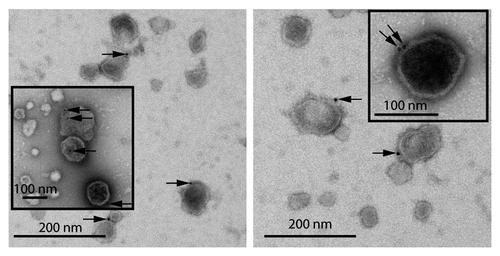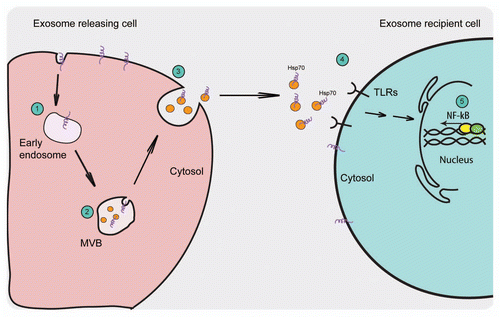Figures & data
Figure 1 EM image showing presence of Hsp70 on exosome membrane. RAW 264.7 mouse macrophages were given heat-shock at 43°C for 2 h. After 6 h recovery at 37°C, exosomes were purified from culture supernatants by differential centrifugation and floatation on a sucrose gradient. The samples were processed for surface immunogold labeling with anti-Hsp70 antibody. Arrows show Hsp70 (gold) labeling on exosome surface. Insets show magnified images of exosomes with surface Hsp70 labeling. (Micrograph provided by Christopher K.E. Bleck).

Figure 2 Schematic representation of the exosome release pathway and the proposed activation of the immune response by exosomal Hsp70. (1) Extracellular molecules or membrane proteins are internalized into the endosomes that form intra-luminal vesicles by the inward budding of their limiting membrane. (2) Under certain conditions, these MVBs fuse with the plasma membrane releasing their ILVs to the outside where they are known as exosomes. (3) Exosomes exhibit the same orientation of their membrane proteins as on the plasma membrane with extracellular domain of the protein present on the exosomal surface. (4) Exosomes that are Hsp70-positive can interact with TLRs on the cell surface (5) thus activating NF-⊠B signaling pathway.
